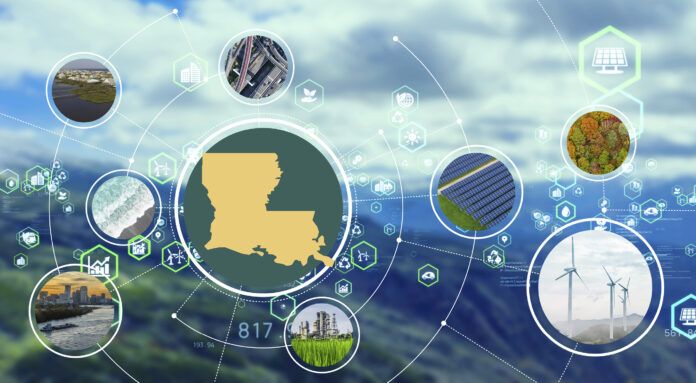In January, it was announced that a statewide team led by LSU had secured a $160 million National Science Foundation grant in support of Louisiana’s energy industry—the largest grant ever awarded by the NSF.
It was huge news for Louisiana, but the full breadth and impact of the grant may not have been immediately apparent.
Meeting on Tuesday, representatives from the NSF, Baker Hughes, ExxonMobil, Shell and the White House gathered in an effort to explain just how significant the grant is, not only for Louisiana but also for the U.S. as a whole.
The grant, called the NSF Engines award, will primarily focus on Louisiana’s energy transition and the decarbonization of the state’s industrial corridor. In total, 10 teams spanning 18 states were awarded NSF Engines grants with a potential investment of nearly $1.6 billion over the next decade.
Louisiana’s team—called Future Use of Energy in Louisiana, or FUEL—comprises more than 50 private and public partners, including community and technical colleges, energy companies, state agencies and universities. Team leader Andrew Maas, associate vice president for research at LSU’s Office of Innovation & Ecosystem Development, called the partnership a “historic event.”
So, what exactly will all of this money accomplish?
Though it was not stated so plainly, it seems that the funding will support initiatives in two main areas as they relate to the energy transition: technological innovation and workforce development.
On the innovation side, FUEL partners will collaborate to develop cutting-edge technologies to aid the U.S. in its energy transition—carbon capture and sequestration, hydrogen combustion, power grid electrification and the like. By developing and applying those technologies in Louisiana, the partnership intends to see the state become a global leader in energy-related research and development.
And if all goes according to plan, the technologies that are developed here will go a long way toward reaching the “net-zero by 2050” emissions goals that have been set by the U.S. and many other major world governments.
“The Baton Rouge engine embodies President Biden’s vision of an American economy where global competitiveness is driven not by outsourcing our talent and expertise, but by investing right here in the heart of communities like Baton Rouge who will drive our country and economy forward,” said Justina Gallegos, deputy director for industrial innovation at the White House Office of Science and Technology Policy.
As for workforce development, a significant chunk of funding will go toward preparing Louisiana’s labor force for the energy transition. According to Maas, more than 250,000 jobs are likely to be created as the transition takes place, and all of the representatives at the briefing appeared to be in agreement that the current members of the energy workforce are extremely well positioned to step into those new roles.
FUEL higher education partners will naturally play a large part in equipping the next generation of energy workers with the skills they need to succeed in that landscape, and energy companies have voiced their intent to upskill current employees whenever possible.
Through Louisiana Economic Development, the state will also contribute an additional $67.5 million to the partnership over the next 10 years to help higher education partners build teams to convert research into practical solutions.
“This engine is a great example of how a region can come together … to address key challenges and really be able to drive home not only solutions but real job creation and upward mobility in terms of the socioeconomic ladder,” said Erwin Gianchandani, assistant director of technology, innovation and partnerships at the NSF.


